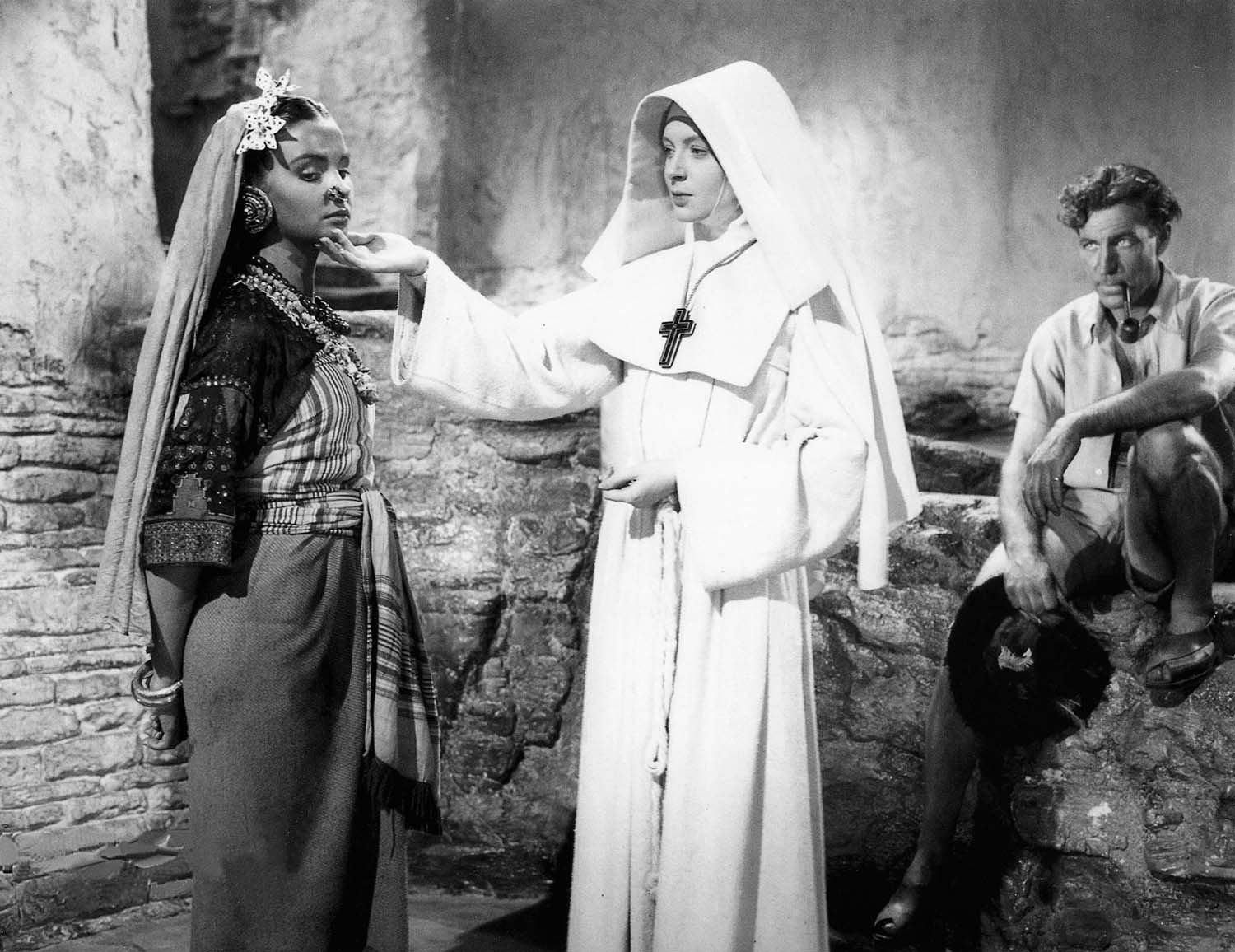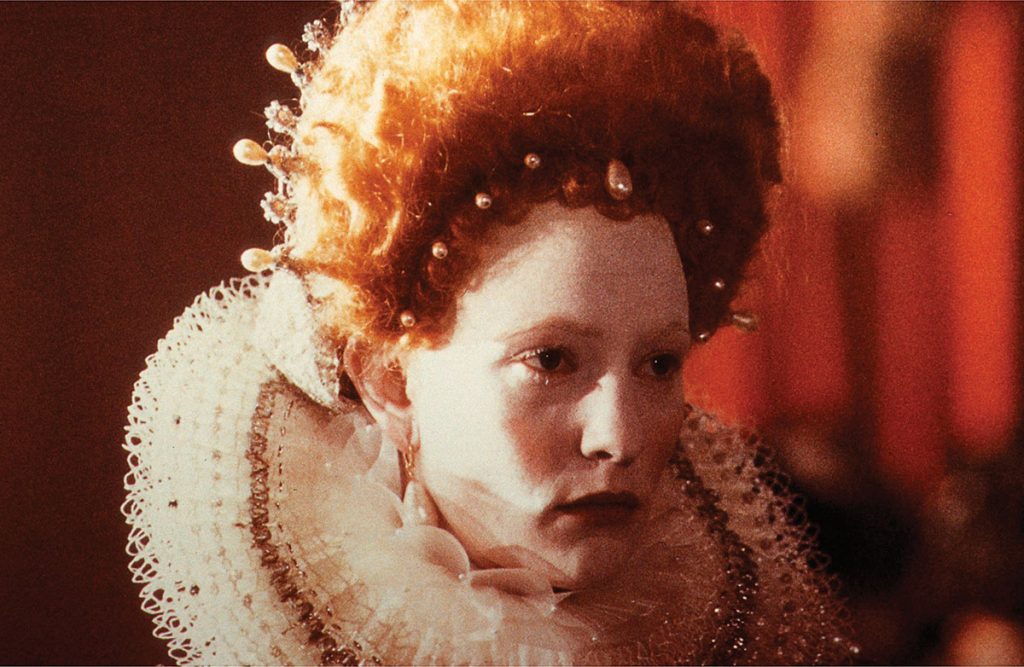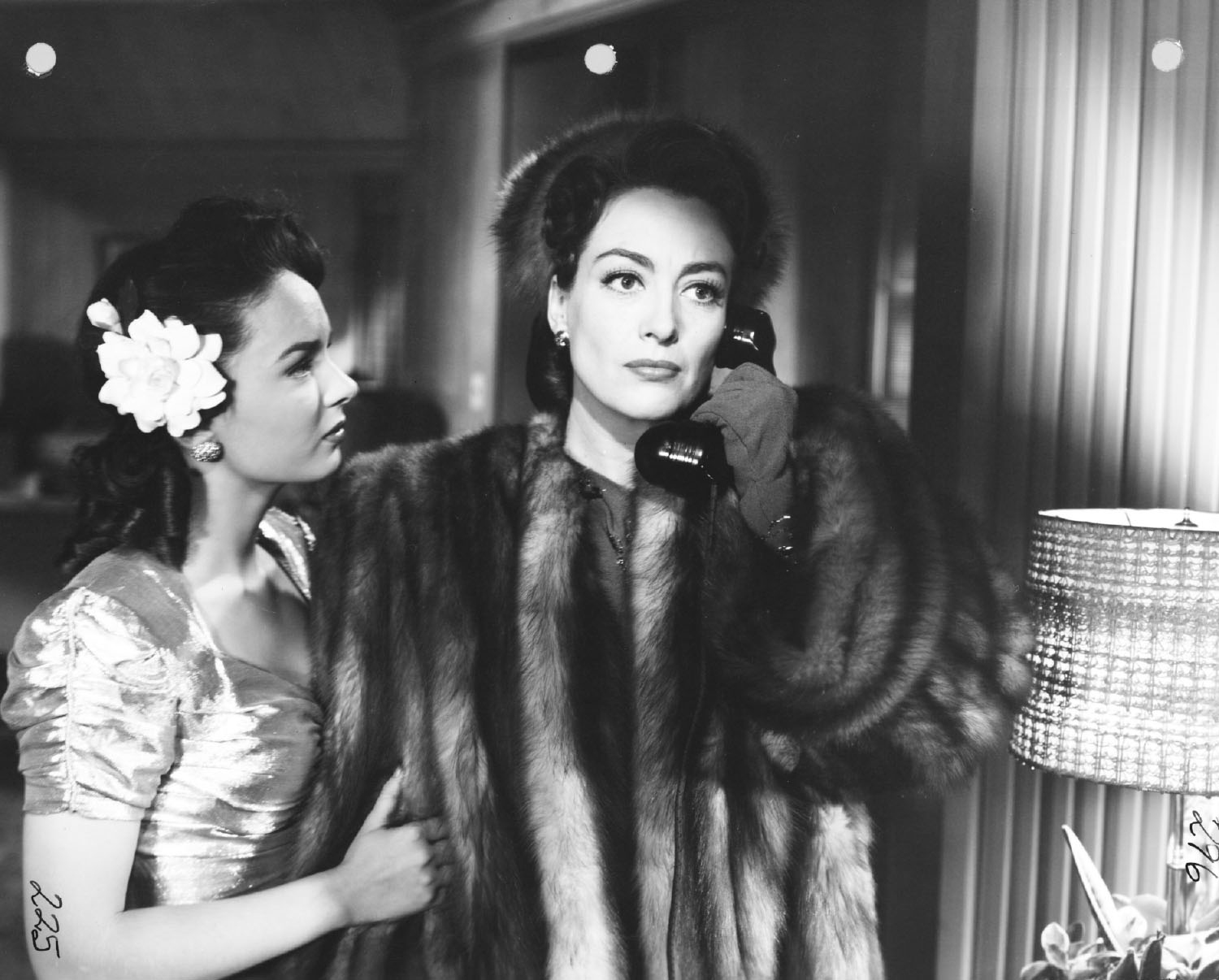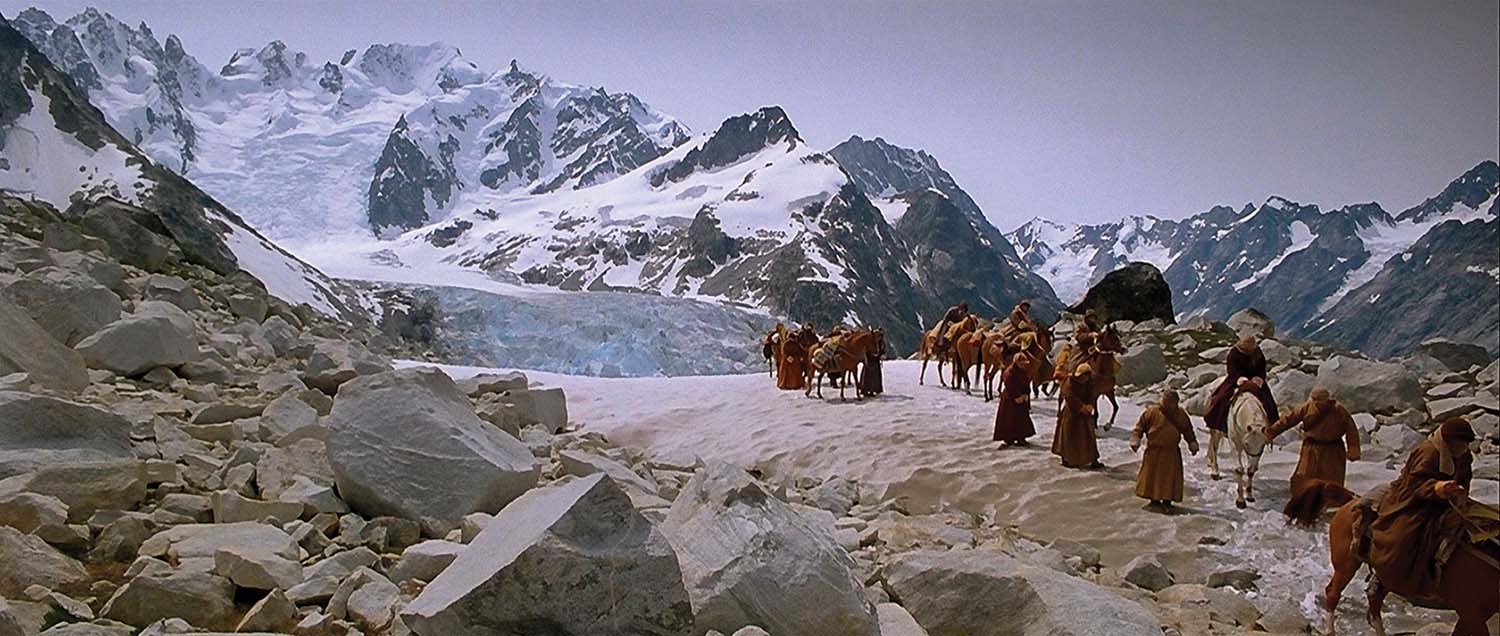
In the 1947 English classic, Jean Simmons is inspected by disciplinarian Sister Superior Deborah Kerr, as David Farrar, a man important to both of them, watches warily. This publicity still is in black-and-white. The movie is a glorious early example of Technicolor.
Sometimes the more spiritual someone tries to be, the more human nature tests them. As if the higher the goal, the baser the temptation. Such is the main theme of Black Narcissus, one of the great post-WWII English dramas — an unforgettable tale of spirituality vs. sensuality.
The film was made by the production team known as The Archers, consisting of English director Michael Powell and German-born writer Emeric Pressburger. They turned out an astounding 20 movies together. Powell was a highly inventive director, able to inspire superb performances, and Pressburger, a refugee from Nazism, wrote literate, distinctive scripts with unexpected humorous flourishes. (Martin Scorsese was significantly influenced by The Archers and has worked to bring their films to the attention of contemporary moviegoers.)
On its surface, Black Narcissus is the story of five Anglo-Catholic nuns trying to maintain order amid overwhelming physical and psychological challenges. In Calcutta, at the Convent of the Order of the Servants of Mary, Irish-born Sister Clodagh (Deborah Kerr, The English Rose) is given the position as Sister Superior at a new location in a distant state in the Empire. Its aging Governor-Prince has invited the nuns to set up a convent and medical dispensary in the Palace of Mopu, which happens to be the sprawling complex of a former harem. Located on a windy mountaintop 8,000 feet high, its still-bright walls covered with murals of enticing naked concubines, the palace used to be known as “The House of Women.” The old caretaker (May Hallat), from next-door Tibet, roams the empty rooms, longing for bygone days when they were filled with the laughter of women.
Sr. Clodagh is eager to rename the palace: The House of St. Faith. Memorable English actresses play the four nuns who accompany Sr. Clodagh: Sr. Briony (Judith Furse), big, strong, and capable; Sr. Philippa (Flora Robson), with her wondrous green thumb; sweet Sister “Honey” (Jenny Laird), whom everyone loves; and Sr. Ruth (Kathleen Byron) who is, alas, “a problem,” fragile in both body and mind. Every morning, promptly at 6, Sr. Clodagh vigorously rings the mighty bronze bell — hanging from a bell tower treacherously close to the mountain’s precipice.
Mr. Dean (David Harrar), the governor’s English agent who lives alone in the jungle below, has agreed to do everything he can to help the nuns. It’s not an easy task. He finds Sr. Clodagh imperious, and resents her aloof spirituality. With his good looks and insolent manner, he’s dangerously male. Sr. Clodagh tolerates him, but Sr. Ruth, to whom he was once kind, is smitten.
The film is famous as an example of early Technicolor’s wizardry — audiences gasped at its thrilling new color palettes and depiction of the Himalayas. Truth is, almost the entire movie was shot in Pinewood Studios about 17 miles west of London. The movie’s awesome expansiveness was created by matte paintings — giant blowups of black-and-white photos of the mountains placed on sheets of glass — that the art department colored by hand. (The English cinematographer, James Cardiff, inspired by Vermeer and Van Gogh, used the camera to create movie art. He received an Oscar for his masterful work, and so did German art director Alfred Junge.)
Color is the true language of Black Narcissus, portraying emotions that are impossible to express in words. The nuns are encased in heavy white fabric, a stiff wimple and veil impeding their ability to see around them. Are they wearing angel wings or shrouds? Some of both, it seems, because in the wind, their habits billow constantly, as though they are about to take off — or be blown away.
Next to this pristine blandness, the other characters pop to life. Red is a key hue. Mr. Dean first appears in a shocking crimson shirt that almost hurts the eyes. Sr. Ruth, having given up her vows, is transformed by blood-red lipstick she ordered by mail from Calcutta. The young prince wears pastel silk outfits, sparkling with gems, and the Indian girls are swathed in jewel tones.
After his father dies, the new Governor-Prince — played by the only native Indian actor in the film, who’s billed by the single name Sabu — comes every day for lessons from the nuns, while the girls learn how to make lace. One day he pulls out a handkerchief saturated with perfume. Its fragrance annoys the nuns but titillates the girls, driving Kanchi, the budding temptress (played by a teenage Jean Simmons), into a kittenish frenzy. “It’s Black Narcissus,” the prince proclaims. “It comes all the way from the Army-Navy store in London.”
Sr. Clodagh, ironically, is disturbed by another character, called The Holy Man, who sits in the forest near the boundaries of the palace property. He never speaks, never moves. He is beloved by the villagers who visit him with food and gifts. Sr. Clodagh wants him evicted, but doesn’t know how to go about it. Mr. Dean mocks her, “What would Christ do?” His message is clear and the audience gets it, even if the nun doesn’t.
In time, no matter how fervently it is begged for, faith cannot make the sisters immune to the strange, erotic atmosphere of the old palace. Memories thought buried come back to haunt them. Being more Earth-shod than they want to admit, the women make mistakes that cannot be prayed away. One night, as angry village drums pulsate to dark skies, madness, always lurking in the shadows, finally erupts.
A few weeks after Black Narcissus was released, India and Pakistan became independent from Great Britain.
Quick take: British nuns in remote India must face their repressed demons.
Players: Deborah Kerr, Kathleen Byron, Flora Robson, Jenny Laird, Judy Furse, May Hallat, Jean Simmons, Sabu, David Farrar.
Producer/Director/Writer: The Archers team of director Michael Powell and screenwriter Emeric Pressburger (A Matter of Life and Death, 1946; Red Shoes, 1948).
Based on the 1939 novel by Rumer Godden.
English with subtitles.
Technicolor, 101 minutes.
Hendersonville Film Society shows Black Narcissus on Sunday, June 10, at 2pm, in the auditorium at Lake Pointe Landing behind Epic Cinemas. For more information, call 828-697-7310.



